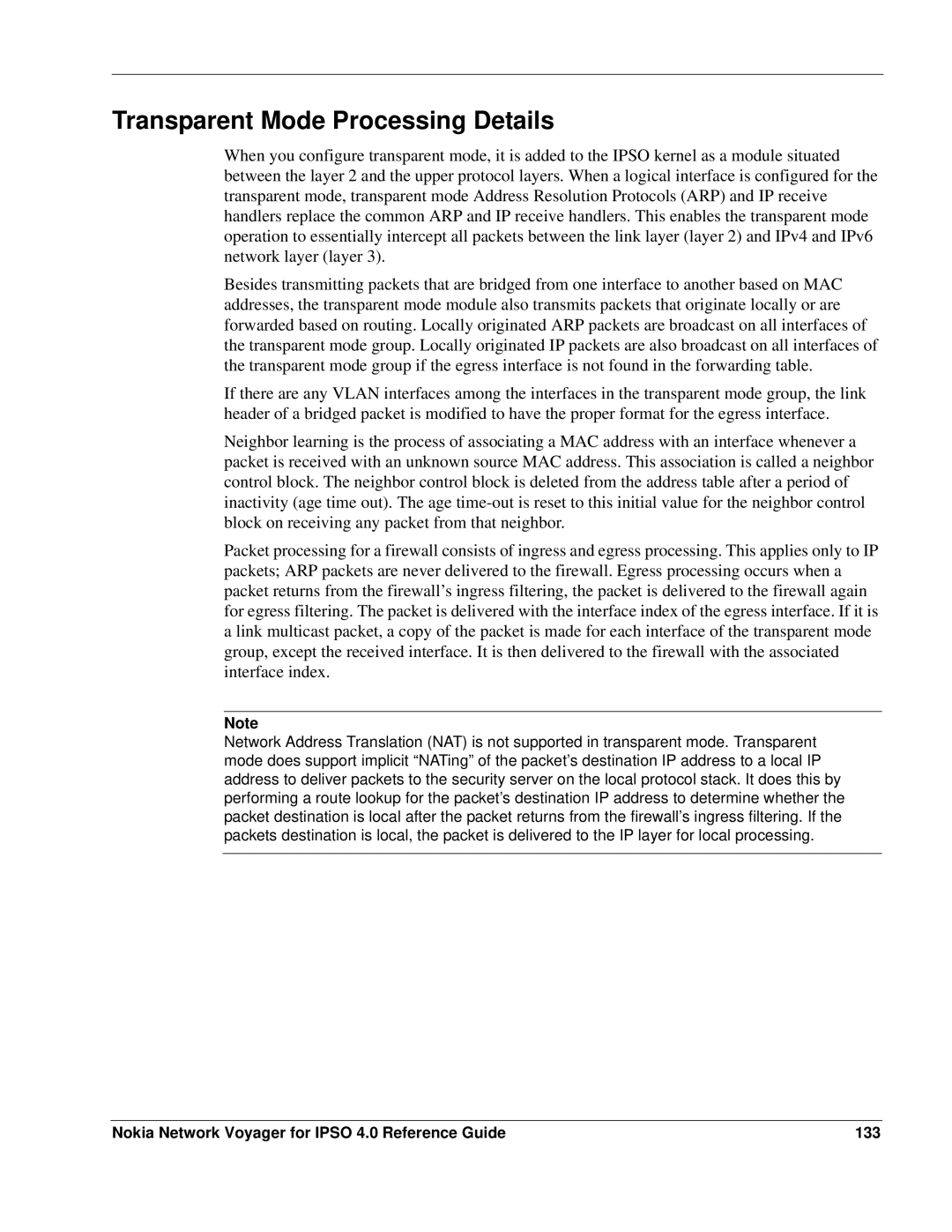
Transparent Mode Processing Details
When you configure transparent mode, it is added to the IPSO kernel as a module situated between the layer 2 and the upper protocol layers. When a logical interface is configured for the transparent mode, transparent mode Address Resolution Protocols (ARP) and IP receive handlers replace the common ARP and IP receive handlers. This enables the transparent mode operation to essentially intercept all packets between the link layer (layer 2) and IPv4 and IPv6 network layer (layer 3).
Besides transmitting packets that are bridged from one interface to another based on MAC addresses, the transparent mode module also transmits packets that originate locally or are forwarded based on routing. Locally originated ARP packets are broadcast on all interfaces of the transparent mode group. Locally originated IP packets are also broadcast on all interfaces of the transparent mode group if the egress interface is not found in the forwarding table.
If there are any VLAN interfaces among the interfaces in the transparent mode group, the link header of a bridged packet is modified to have the proper format for the egress interface.
Neighbor learning is the process of associating a MAC address with an interface whenever a packet is received with an unknown source MAC address. This association is called a neighbor control block. The neighbor control block is deleted from the address table after a period of inactivity (age time out). The age
Packet processing for a firewall consists of ingress and egress processing. This applies only to IP packets; ARP packets are never delivered to the firewall. Egress processing occurs when a packet returns from the firewall’s ingress filtering, the packet is delivered to the firewall again for egress filtering. The packet is delivered with the interface index of the egress interface. If it is a link multicast packet, a copy of the packet is made for each interface of the transparent mode group, except the received interface. It is then delivered to the firewall with the associated interface index.
Note
Network Address Translation (NAT) is not supported in transparent mode. Transparent mode does support implicit “NATing” of the packet’s destination IP address to a local IP address to deliver packets to the security server on the local protocol stack. It does this by performing a route lookup for the packet’s destination IP address to determine whether the packet destination is local after the packet returns from the firewall’s ingress filtering. If the packets destination is local, the packet is delivered to the IP layer for local processing.
Nokia Network Voyager for IPSO 4.0 Reference Guide | 133 |
